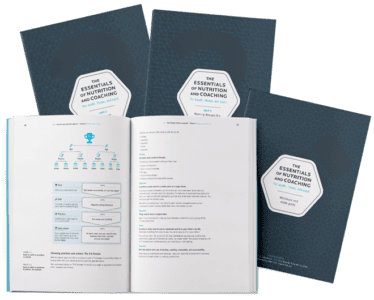Chapter 7
Intermittent fasting and working out
Fasting and exercise don’t always mix because they’re both stressors. In this chapter, we’ll dig into what science tells us about intermittent fasting and exercise, how to balance your workout schedule with your fasting schedule, and when to do low intensity, high intensity, and active recovery workouts.
Key concepts
- How you exercise matters. Combining moderate exercise with intermittent fasting tends to work better than either zero exercise or intense exercise.
- If your body weight dips too low, or your negative energy balance is too extreme, your body will adapt by decreasing your spontaneous activity. In other words, lying on the couch starts to look like the best possible option.
- Your ability to perform while fasting depends on several factors. They include: Your genetics, the fasting schedule, the type of exercise, and your recovery.
There’s really no getting around this, so we’ll just come out and say it.
Depending on the intermittent fasting (IF) schedule you follow, your exercise performance will most likely suffer—at least for a while.
The good news: You don’t need to stop working out. You need only find your sweet spot—that magical place where you’re working out “just enough” and fasting “just enough” to meet your goals.
In this chapter, we’ll give you a road map that can lead you to that place. You’ll learn:
- Why athletic performance tends to go downhill when people try IF—and what to do about it
- The type of exercise that works best with IF
- How to organize your IF schedule around your workouts
What Ramadan can teach us about intermittent fasting
During the holy month of Ramadan, observant Muslims fast every day from sunrise to sunset for about 30 days. The fast-breaking evening meal is often a big dinner.
Over the years, researchers have studied observant Muslims in an effort to find out how fasting affects a range of outcomes, including athletic performance. As it turns out, Muslim athletes tend to do worse in the early weeks of a Ramadan fasting schedule, research finds.1
How someone performs depends on several factors:
- The individual athlete: Just as some athletes can train harder and longer than others, some also adapt to fasting more easily and more quickly than others. Hello, genetics.
- Recovery and nutrition: Adequate rest, sleep, hydration, and nutrition can all help the body to adapt more quickly to IF and heavy training.
- The fasting schedule: Less intense types of fasting (such as the 16:8 protocol) pair better with heavy exercise than more intense styles of fasting.
- The type of exercise. Fasting is more likely to negatively affect more intense training. (More about this below).
The following activities generally don’t pair well with IF. If any of these are your jam, you can probably expect your performance to suffer as your body adapts to this new way of eating:
- activities that require intense effort (such as 200-400 meter runs)
- speed endurance, such as repeated short, intense runs in soccer
- repeated power-explosive movements like jumping
- some types of strength and work capacity
You may notice, for example, that you can’t run or cycle up hills like you used to. And if you strength train, you might not be able to bang out as many push-ups or pull-ups.
Worse, if you try to power through, your body will likely undo your efforts in other ways. When Precision Nutrition co-founder John Berardi, PhD paired twice-weekly fasting with a fairly intense exercise schedule, he found he was dead tired by mid-afternoon.
Dr. Berardi described it like this: “It’s like I’m a video game character starting off with 10/10 on the power bar, and by late evening there are only three bars left.”
Why? His body was conserving calories, which kept him on the couch. Unless he forced himself to get up and do stuff, he was neutralizing his negative energy balance.
But it’s not all bad news.
Pairing exercise with IF can boost results, too.
One study looked out at how people did when they tried alternate day fasting (ADF)—either with exercise or without it.2 Here’s how exercise (or no exercise) affected heart health (based on levels of LDL cholesterol), body fat, and lean mass (such as muscle, bone, connective tissue, and internal organs):
| LDL cholesterol | Fat mass | Lean mass | |
|---|---|---|---|
| ADF without exercise | Reduced by 1 point | Lost 4.4 lb/2 kg | Lost 2.2 lb/1 kg |
| ADF with exercise | Reduced by 12 points | Lost 11 lb/5 kg | Lost 0 lb/0 kg |
To see gains, however, you need a balance: enough movement to keep lean mass, but not so much that you don’t recover.
To find that elusive balance, use the following pointers.
Pointer #1: Pair low-intensity exercise with any intermittent fasting schedule.
Our ancestors didn’t kill themselves with tough training sessions. In fact, they wanted to do the opposite: conserve valuable energy and stay uninjured as long as possible.
Most of their exercise was rambling, such as walking, which goes perfectly with IF. That means:
- If you’re not currently exercising intensely, maintain that status quo when experimenting with IF fasting schedules.
- If you are currently exercising intensely, consider reducing or eliminating your high-intensity training and adding more daily-life rambling-type movement instead.
Pointer #2: With demanding fasting schedules, decrease workout intensity.
Precision Nutrition’s Director of Curriculum, Krista Scott-Dixon, PhD, learned this lesson the hard way when she started fasting twice a week. Upcoming Brazilian jiu-jitsu competitions created pressure to cut weight, so she kept her exercise regimen pretty intense.
“I was cycling and running several hours a week, often while fasted,” she says. “I thought I was being a badass. In reality, I was being foolish, and doing everything I’d tell clients not to do.”
She experienced insomnia, heart palpitations, anxiety, and horrible mood swings, as well as some budding stress fractures.
Let her story be a cautionary tale.
It’s easy to fool ourselves into thinking we’ll be the exception to the rule. All too often, we eventually find out we’re the rule after all.
What actually counts as “too much” exercise will depend on you, but a good general guideline would be:
- no more than 3-4 hours a week of heavier resistance training
- no more than 2-3 brief sessions of metabolic conditioning a week (intervals, high-intensity cardio, circuit training)
- no more than 1-2 hours a week of moderate intensity cardio (if any)
(For a deeper dive, see “How to avoid overtraining.”)
Pointer #3: Time eating around workouts.
As you’ll see throughout this ebook, there’s no one best way to organize fasting and non-fasting periods. Self-experimentation (pointer #4) can show you what works best for you.
However, most people find they do best when they schedule their workouts on the days they’re better fed. It allows them to have enough energy for workouts as well as nutrients for recovery.
In this regard, the “intermittent” part of IF can work more effectively than a standard caloric deficit.
For instance, if you were cutting calories by 75 percent three days a week and eating normally on the other four, your workout schedule might look like this:
| Energy intake | Activity type | |
|---|---|---|
| Day 1 | Low (0 to 25% of normal needs) |
Low-intensity or active recovery (e.g. gentle yoga, walking, mobility exercises) |
| Day 2 | Normal (100% of normal energy needs) |
Higher-intensity or longer duration (e.g. weightlifting, metabolic conditioning, long runs) |
| Day 3 | Low (0 to 25% of normal needs) |
Low-intensity or active recovery |
| Day 4 | Normal (100% of normal energy needs) |
Higher-intensity or longer duration |
| Day 5 | Low (0 to 25% of normal needs) |
Low-intensity or active recovery |
| Day 6 | Normal (100% of normal energy needs) |
Higher-intensity or longer duration |
| Day 7 | Normal (100% of normal energy needs) |
Higher-intensity or longer duration |
On the other hand, if you were using an eating window schedule such as the 16:8 plan, it might look like this:
| Time | Energy intake | Activity type |
|---|---|---|
| 8 PM to 12 PM the next day (16 hours) | None | Low intensity only (e.g. gentle yoga, walking) |
| 12 PM: Meal 1 | Normal | Low intensity only |
| 4 PM: Meal 2 | Normal | Low intensity only |
| 6 to 7 PM: Workout | Higher intensity (e.g. weightlifting, metabolic conditioning) | |
| 7:30 PM: Meal 3 | Normal | Recovery |
| 8 PM: End of last meal; no eating again until 12 PM the following day | None | Low intensity only |
Pointer #4 : To find what works for you: experiment.
We mentioned experimentation in several of the previous chapters, and we’ll mention it here, too.
You might discover that you’re one of the rare people who can push yourself to the max with both exercise and IF.
Alternatively, you might decide, as Dr. Berardi did, that the best approach for you is:
- Less frequent fasts and/or fasts of shorter duration
- Eating your largest meals after exercise
- Increasing your energy intake to match your exercise needs
Or you might land on a completely different strategy.
The point: Learning what’s right for you usually requires a bit of trial and error. And that trial and error is the best and only way to find your own unique personal recipe. For more on how to experiment with fasting, keep reading. The next chapter explains everything you need to know.
References
Click here to view the information sources referenced in this article.




